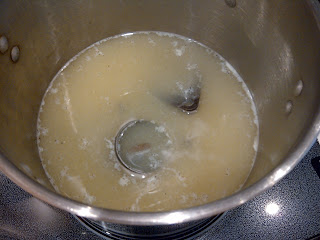31/3/2012
Having found another
Willys Jeep Pickup while casually browsing an online classified site, I got to
thinking, “Yes, it’s time for another project.” I spent the winter going stir
crazy wanting to get my hands dirty again and tuck into something that needed a
bit of automotive salvation. With that in mind, I set up a time to view what
would become my next project.
The Basics:
- 1960(ish) Willys Pickup. (late
1960 saw the intro of the 1-piece windshield)
- Original Willys Super Hurricane Flathead 6,
producing 105HP and around 195lbft of torque, when new
- Original Borg Warner T-90
toploader 3-speed transmission, mated to a Spicer 18 transfer case.
- Original bed, albeit very
rough and rusted, rare to find a truck so unmolested.
- Original Interior components
(where surviving). Pedals, shifter knobs, dash knobs all still intact. Looks
like some door components are missing – probably have been for ages – will need
to find new ones.
- Meyers SP78 added at some
point in the past. This was done in a more “professional” manner using bolts and
standard hardware, rather than welding it to the frame as I would expect on a
truck of this age. Since I already have a plow on the other Willys up north, I
figure having 2 is likely overkill. This one is closer to resto than the ’51,
so I think that’s exactly what I’m going to do.
- All glass, surprisingly
uncracked. The passenger window is missing however, but should be an easy
replace by templating the driver’s side and getting one made up (will make a
temp Plexiglas one).
- This truck has rust in most of
the usual spots. The bed is really now just fenders and a top rail, the
floor/mounts of the cab are basically non-existent, and the frame needs some
patching on a cross member. This means welding, lots of welding, and a lot of
good old fashioned fabricating. This is exactly what I wanted.
- Extra goodies included the
aforementioned plow, and a set of 4 spare tires all on matching rims (3 of
these tires nearly match the spare on the truck). I am well cared for in the
Willys tire department.
The plan in general
with this truck takes a different approach to the Wagoneer I spent 4 years
rebuilding. On the Wagoneer, it wasn’t really worth the investment to make it
sparkling new, since it was just so beat up. This vehicle is made mostly of
flat steel, so my plan is to reproduce the pickup bed in CAD and get the
shearing work done at the same place that made my bumper, then weld it all
together myself at home. It will be slightly more expensive than doing it
yourself, but very pro and a lot faster than messing about in my garage with
massive pieces of steel. With this reproduction I should be able to visibly duplicate
the factory bed, while making some much needed structural improvements.
The bottom of the
cab will receive a similar treatment to the bed, with most of the underside
forming work being done by a manufacturer. 14 gauge sheet steel is not wildly
expensive or hard to work with, so it shouldn’t break the bank at all.
First steps with
this truck will be to get it running so I can move it around the driveway. I
need to patch a brake line that sprung a leak when I pushed the pedal… should
be relatively easy to fix. Also going to try boiling the carb and fuel pump to
get them all limbered up and ready for service, a trick I learned from a
classmate in college.
 |
| The only non-original pieces, these vintage WW2 blackout lights can be cleaned up and used as tail lights |
 |
| Here sits the beast with the pro plow mount removed. Thanks to whoever bolted it on, it came off like a dream in a couple minutes. |
 |
| Spartan interior. Lots to love here. Need to try my hand at upholstery once I get some different seating |
Otherwise I spent my
time browsing the interior, marveling that although not 100% complete, it is
remarkably unchanged and original. The cardboard glove-box is still intact and
housing old bits and pieces, and the cable driven vacuum wipers are still in
place. This level of completeness demands only one thing; RESTORATION



































